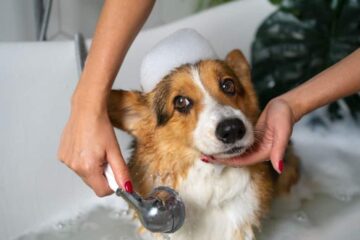Cats are delightful companions known for their playful antics and independent nature. Owning a cat comes with its fair share of messes. From furballs to litter box spills, these messes can seem overwhelming. Knowing how to effectively clean up after your feline friend is essential for maintaining a clean home. Here are tips for cleaning up seven common cat messes.
1. Hairballs
Hairballs are a common issue for cats. As cats clean themselves, their rough tongues pull loose and dead hair into their mouths. Hair accumulates in the stomach and forms a hairball. Eventually, your cat will vomit this sticky, smelly mess on your floor. To clean up the hairball, remove the hairball with a paper towel. Use a pet-safe carpet cleaner to eliminate lingering smells or stains.
2. Litter Box Spills
Even the cleanest cats scatter litter outside their box. To clean up litter box spills, sweep up the loose litter with a broom or vacuum. Pick up larger granules with a damp paper towel. Accessories for cats like mats and litter box liners can reduce stray litter on your floors. These accessories make cleaning up after your cat easier.
3. Cat Urine
Cat urine leaves behind stubborn stains and strong odors. Blot the urine with paper towels. Use an enzymatic cleaner designed specifically for pet stains. These cleaners break down the proteins in urine. The enzymes neutralize the smell so your cat doesn’t eliminate in the same spot. For older stains, you may need to repeat the process a few times to fully eliminate the odor.
4. Scratched Furniture
If your cat loves to scratch your furniture, you may wonder how to repair this damage. You can buff the scratched area with a soft cloth to remove any loose fibers. For wooden furniture, use a matching wood filler to fill in the scratches. You can treat leather furniture with conditioner or use a repair kit for serious damage. To prevent scratching, give your cat scratching posts as an alternative. Regular nail trims can also reduce future damage.
5. Spilled Food and Water
Cats often spill food and water around their bowls. Over time, this mess can attract insects and mice. To prevent pest infestation, clean up the spilled food promptly. Sweep or vacuum dry food spills. You can clean wet food with a paper towel, soap, and water. Wipe water spills with a dry towel. You can place a mat under the food and water dishes to contain the mess for easier cleanup in the future.
6. Cat Fur
Cats shed fur continuously on furniture and floors. You can use a lint roller to collect loose fur from surfaces. Vacuuming regularly, especially with a vacuum designed for pet hair, can help keep your home fur-free. For furniture, consider using washable covers that can be easily removed and cleaned. Brushing your cat frequently can also reduce the amount of fur they shed, as it helps remove loose hairs before they end up around your home.
7. Cat Vomit
Cats can vomit for various reasons, including eating quickly, hairballs, or health issues. When dealing with cat vomit, it’s important to act quickly to prevent stains and odors. First, remove as much of the solid matter as possible using paper towels or a plastic scraper. Next, blot the area with a cloth dampened with a solution of equal parts white vinegar and water to neutralize odors and break down the vomit. For carpets or upholstery, use a pet-safe enzymatic cleaner to thoroughly clean the area and eliminate any lingering smell. If your cat vomits frequently, you may want to consult with your veterinarian to determine the cause.
Cleaning Up Cat Messes
Dealing with cat messes is an inevitable part of being a cat owner. These tips can help you clean up common cat messes. You and your cat will enjoy a cleaner and healthier living environment. From hairballs to urine stains, each mess requires specific cleaning techniques and tools. Regular maintenance and proactive measures can minimize the frequency and impact of these messes.



